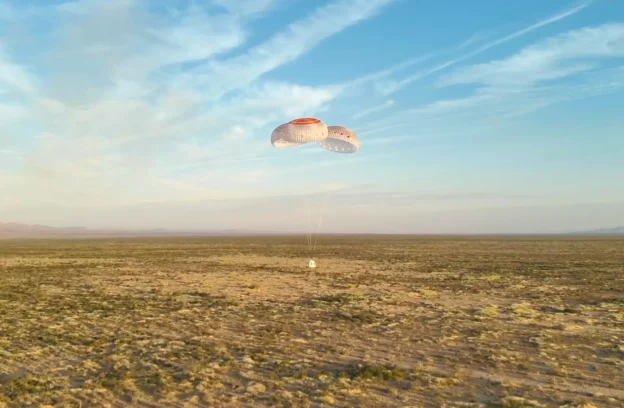On September 18, 2025, Blue Origin’s New Shepard reusable suborbital rocket completed its 35th flight from West Texas. This was the 15th operation dedicated exclusively to the transport of payloads (scientific experiments and educational projects), with no human crew on board.
What is the New Shepard rocket?
This is a reusable suborbital launch vehicle developed by Blue Origin and is designed to carry people and payloads into space above the Kármán Line (100 km altitude), which is the internationally recognized boundary of outer space, and then return safely to Earth. The rocket consists of 2 parts:
- A rocket booster that takes off, ascends and then lands vertically autonomously to be used again.
- A capsule carrying the astronauts or, in this case, the payload. This capsule separates from the rocket, continues into space and returns to Earth with a parachute.
NS-35 mission, a flight with scientific and educational value
The mission transported more than 40 experiments from universities, research labs and technology companies, including proposals supported by NASA. In fact, after the delivery of this payload, the total number of experiments carried by the New Shepard has exceeded more than 200 payloads delivered in total.
In addition, as part of the Club for the Futureprogram, thousands of postcards designed by students were sent aboard the flight. The postcards are returned with a stamp that reads “Flown into Space,” a symbolic gesture intended to spark students’ interest in space exploration.
Direct from Blue Origin where they showed how the NS-35 mission was carried out. Source: Blue Origin
Flight technical data
The flight was brief, lasting 10 minutes and 14 seconds, reaching an altitude of about 105 km, surpassing the Kármán Line without problems. Subsequently, for about 3-4 minutes, the experiments inside the capsule experienced weightlessness, allowing research to be carried out in this environment.
Technical stability after previous delays
The NS-35 mission launch had been rescheduled several times (August 23 and 26, 2025) due to propellant avionics problems on its previous launch date. Blue Origin prioritized safety and reliability, postponing the flight until the problem was fully resolved, which they finally accomplished for the successful launch on September 18.
Ultimately, the window of opportunity was met without a hitch, showing an effective operational recovery by the space company’s team.
Commitment to access to space
According to Audrey Powers, vice president of Mission and Flight Operations, the company will continue to promote accessible, fast and safe scientific missions. This initiative provides a fast and more cost-effective platform for researchers to access the microgravity environment and test technologies, while serving as a powerful outreach tool to promote interest in science and space exploration.
Source: Blue Origin



